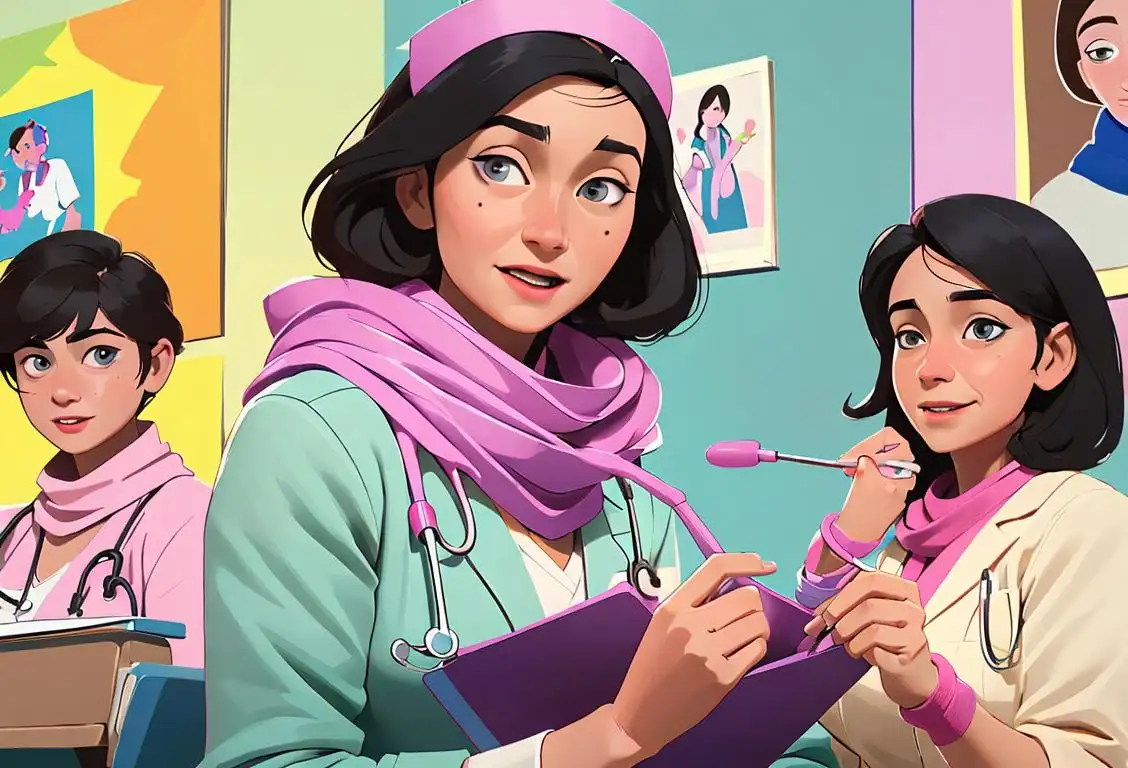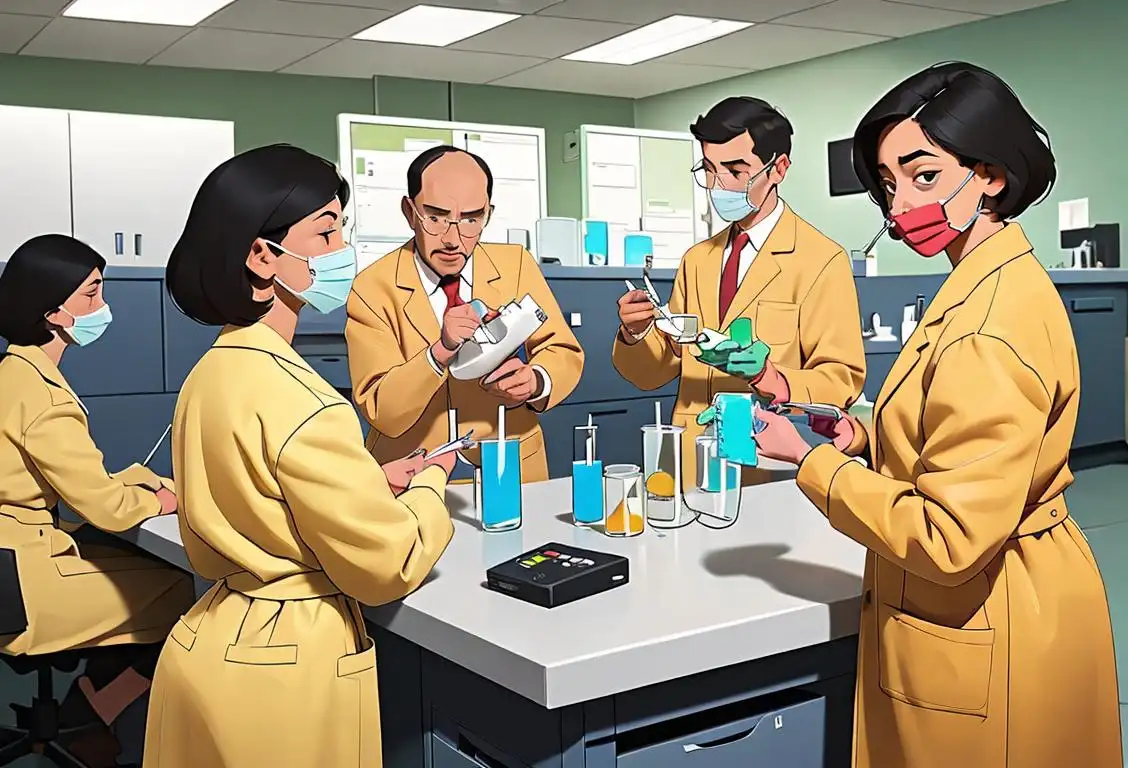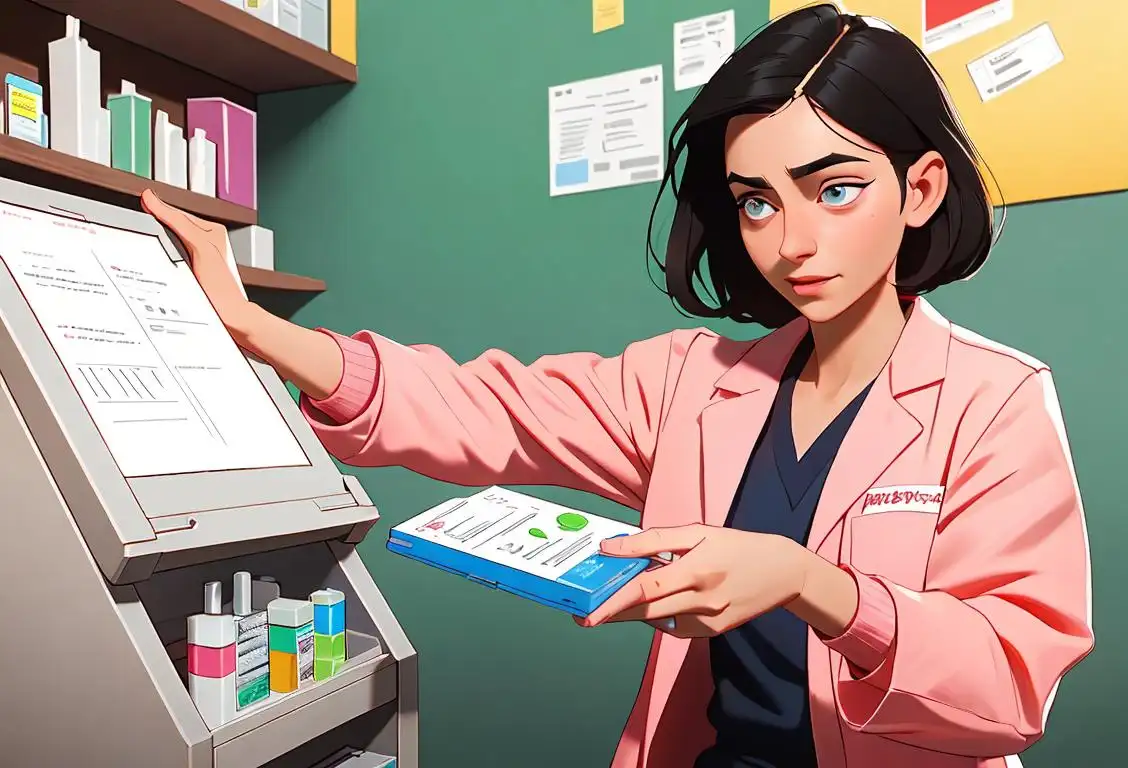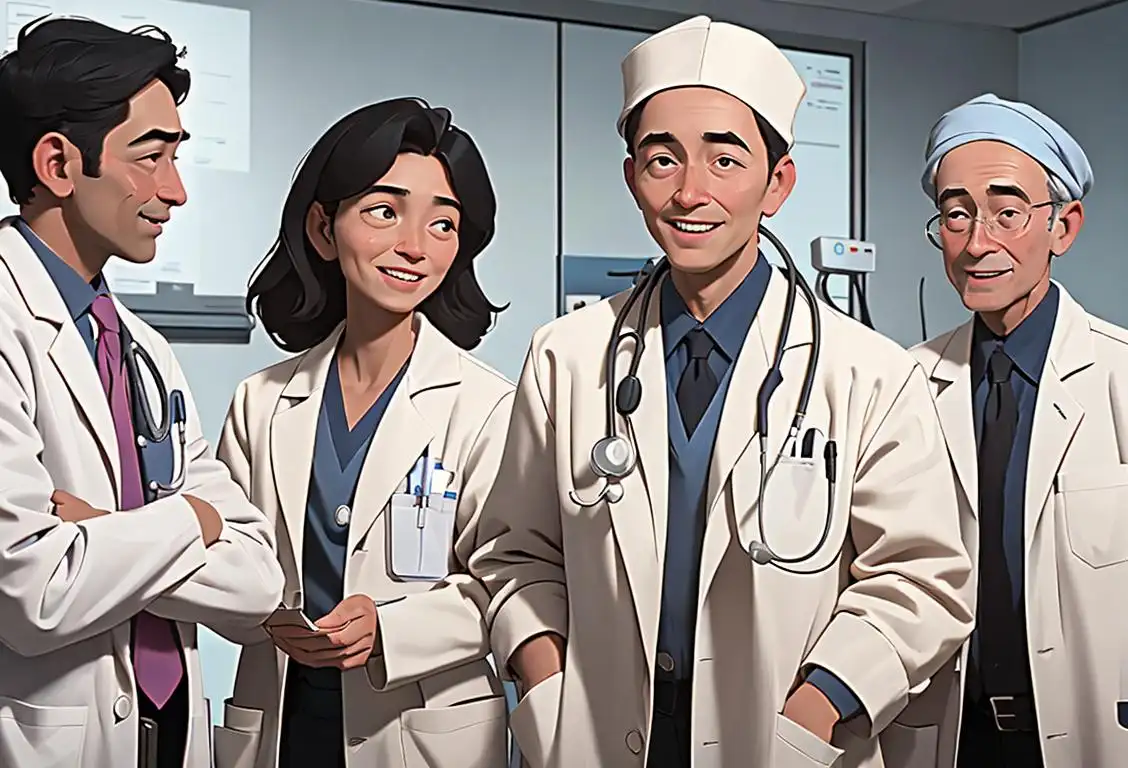National Prescription Takeback Day
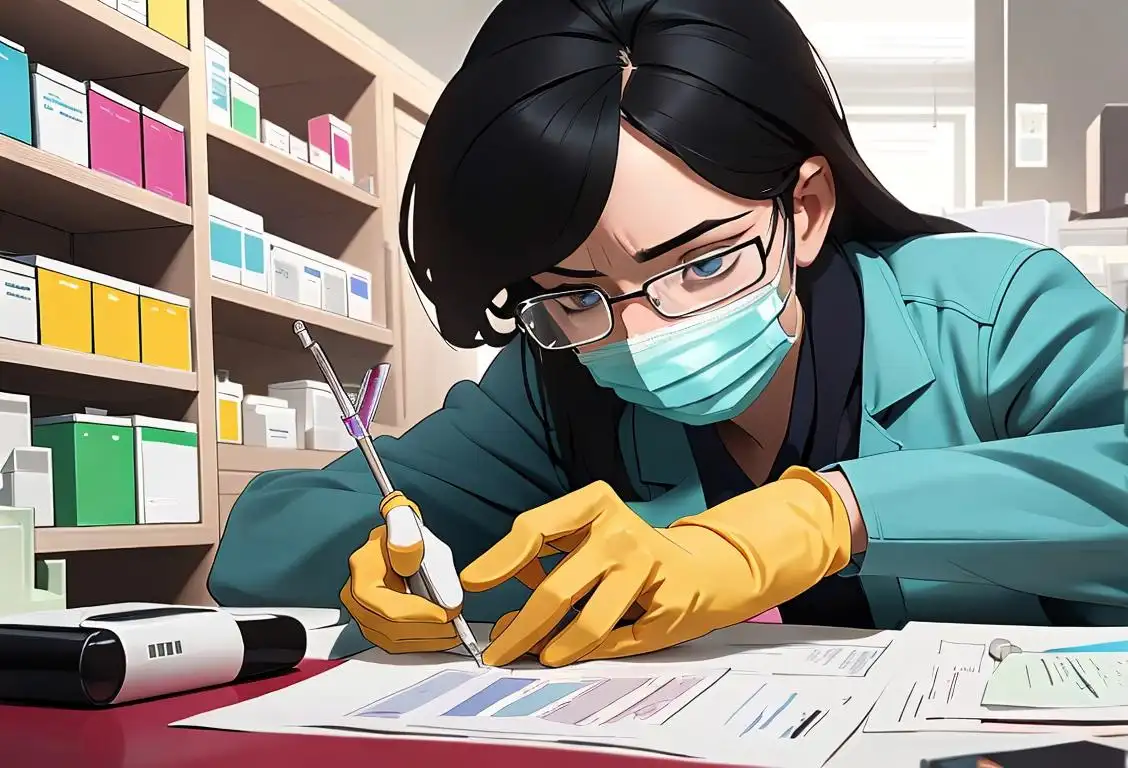
Hey there! Are you ready to dive into the fascinating world of National Prescription Takeback Day? This special day is all about taking action and safely disposing of unused prescription medication. So, grab your reading glasses and let's get started!
When is Prescription Takeback Day?
It's national prescription takeback day on the 27th April.
Internet History of National Prescription Takeback Day
National Prescription Takeback Day is an annual event that takes place on the last Saturday of April. The aim of this day is to encourage individuals to hand in their unused prescription medication to designated collection sites, ensuring safe disposal and keeping potentially harmful drugs off the streets.
The prevalence of National Prescription Takeback Day on the internet really skyrocketed back in 2018. On April 27th of that year, it seems like everyone was buzzing about this important initiative. There were a total of 8 mentions online, making it clear that people were recognizing the significance of responsibly disposing of their medication.
The Importance of Safely Disposing Prescription Medication
So, why is it crucial to safely dispose of unused prescription medication? Well, it turns out that simply throwing these meds in the trash or flushing them down the toilet can have a negative impact on the environment. Plus, and we can't emphasize this enough, it's important to keep these drugs out of the wrong hands. National Prescription Takeback Day offers a safe and anonymous way to get rid of those unused meds that have been piling up in your cabinet.
How to Participate
Participating in National Prescription Takeback Day is easier than finding that elusive last pill at the bottom of the bottle. All you need to do is locate a collection site near you. These sites are typically set up at local pharmacies, hospitals, or even police stations.
Once you've found a collection site, simply bring your unused prescription medication, no questions asked. You can rest easy knowing that you're doing your part to ensure the safe disposal of these medications.
Did You Know?
History behind the term 'Prescription Takeback'
2010
Rise of Prescription Drug Misuse
By 2010, the United States was facing a staggering rise in prescription drug misuse and abuse. Unused and expired medications were being diverted into the wrong hands, leading to addiction, overdose, and other unintended consequences. The need for a solution to safely dispose of these medications became apparent.
1971
Rise of Prescription Drug Abuse
In the year 1971, prescription drug abuse began to rise as a major public health concern. People started misusing prescription medications such as painkillers, sedatives, and stimulants. This led to an increase in addiction rates, overdose deaths, and other negative impacts on society.
1971
The Controlled Substances Act
In 1971, the United States Congress passed the Controlled Substances Act, which placed strict regulations on the distribution and use of certain drugs. The act classified different substances into different schedules based on their potential for abuse and accepted medical use. This legislation aimed to combat drug abuse and ensure the safe and appropriate use of prescription medications.
2009
Inception of Prescription Takeback Programs
In 2009, the U.S. Drug Enforcement Administration (DEA) launched the first National Prescription Drug Take-Back Day. This initiative aimed to provide a safe and anonymous way for individuals to dispose of their unused or expired prescription medications. Prescription takeback programs became an important step in preventing drug diversion, misuse, and environmental contamination caused by improper disposal.
2010
First Prescription Takeback Day
In response to the prescription drug crisis, the Drug Enforcement Administration (DEA) and various law enforcement agencies partnered up to launch the first National Prescription Drug Take Back Day in September 2010. The aim of this initiative was to provide a safe and convenient way for people to dispose of their unused and expired medications.
2004
Promoting Safe Medication Disposal
In 2004, the U.S. Drug Enforcement Administration (DEA) launched the first National Prescription Drug Take Back Day. The initiative aimed to provide a safe and convenient way for individuals to dispose of unused or expired medications. This step was taken to prevent the misuse and abuse of prescription drugs, reduce environmental risks from improper disposal, and promote public safety.
2010
Expanding Awareness and Participation
In 2010, the DEA continued its efforts by expanding the National Prescription Drug Take-Back Day to include more collection sites across the country. This expansion helped raise awareness about the importance of proper medication disposal and encouraged individuals to participate in the initiative. Public education campaigns highlighted the potential dangers of keeping unused medications at home and emphasized the need for safe disposal options.
2014
Expanding Awareness and Participation
As the awareness surrounding prescription drug misuse continued to grow, so did the recognition of Prescription Takeback Day. The event started gaining significant media coverage, and more communities began participating, spreading the word about the importance of safe medication disposal.
2010
Expansion and Awareness
By the year 2010, the National Prescription Drug Take Back Day had gained significant momentum. Law enforcement agencies, community organizations, and pharmacies across the United States actively participated in spreading awareness about the event. The focus was on educating the public about the importance of proper medication disposal and providing accessible collection sites for prescription drug take-back.
2018
Evolution into a National Campaign
By 2018, Prescription Takeback Day had evolved into a powerful national campaign. The event was no longer limited to a single day but extended into a semi-annual opportunity for individuals to dispose of their prescription drugs safely. The campaign aimed to reduce the availability of unused medications in households, ultimately contributing to the prevention of drug misuse.
2014
Becoming a Regular Event
In 2014, the DEA made National Prescription Drug Take Back Day an official recurring event, taking place twice a year in April and October. This step further solidified its significance in raising awareness about prescription drug abuse prevention and promoting safe disposal practices. As a result, thousands of pounds of expired and unused prescription drugs were safely collected and disposed of each year.
2014
Creating Permanent Disposal Options
Recognizing the ongoing need for safe medication disposal, lawmakers and government agencies worked to establish more permanent options beyond the National Take-Back Day events. In 2014, the Secure and Responsible Drug Disposal Act was signed into law. This act allowed authorized collectors, such as pharmacies and medical facilities, to provide year-round collection and disposal of prescription medications. It aimed to make proper disposal more accessible to the public and reduce the risk of medication misuse or environmental hazards.
Present
Continued Expansion and Awareness
Prescription takeback programs have continued to gain momentum and expand nationwide. Many local law enforcement agencies, pharmacies, and community organizations now offer permanent collection sites for safely disposing of prescription medications. These programs not only help prevent drug abuse and accidental ingestion but also contribute to environmental preservation by keeping medications out of the water supply. The ongoing efforts of prescription takeback programs raise public awareness about the importance of responsible medication use and disposal.
2021
Expanding Beyond Local Collection Sites
In recent times, the concept of prescription takeback has expanded beyond physical collection sites. With the advent of technology, various pharmacies and healthcare organizations have implemented convenient prescription drug disposal programs. These programs allow individuals to safely dispose of their medications throughout the year, contributing to the prevention of drug diversion and environmental contamination.
Present
Continued Impact and Expansion
Today, prescription takeback initiatives continue to grow and evolve. Many countries around the world, inspired by the success of the National Prescription Drug Take Back Day, have implemented their own programs to combat prescription drug abuse. Furthermore, advancements in technology have allowed for the development of secure, authorized drop-off locations and even mail-back options, making it easier for individuals to participate in prescription drug take-back efforts.
Did you know?
Did you know that the very first National Prescription Takeback Day was organized by the Drug Enforcement Administration (DEA) in collaboration with local law enforcement agencies? It proved to be such a success that it has become an annual event that continues to gain momentum!Tagged
awareness healthFirst identified
27th April 2018Most mentioned on
27th April 2018Total mentions
8Other days
Kale Day
School Nurse Day
Drug Test Day
Women Physicians Day
Fitness Day
Prescription Drug Take Back Day
Doctors Day
Hiv Testing Day
No Bra Day
Lash Day

